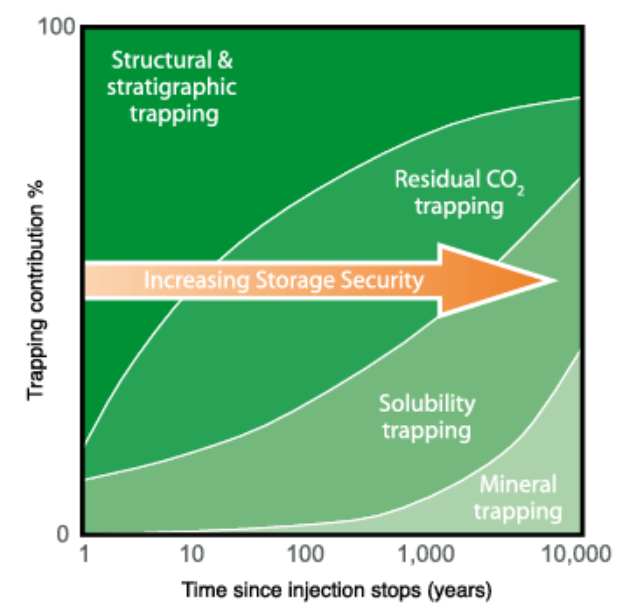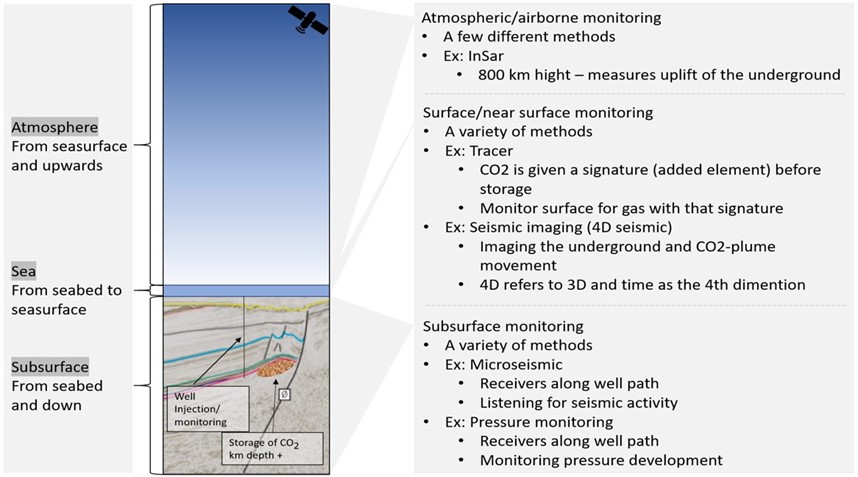CCS covers a range of technologies for capturing carbon dioxide from industrial processes before the emissions reach the air and for storing the carbon permanently in underground storage sites. Suitable storage locations contain porous and permeable rocks with a sufficiently dense layer above that ensures that the carbon does not leak up to the surface again.
In the Norwegian CCS project Longship, carbon will be stored in a sandstone formation around 3,000 metres below the seabed in the North Sea. This formation is a saline aquifer, which means that there is salt water in the porous spaces before the carbon is pumped down and displaces the formation water.
Once the carbon has been stored in sandstone formations, the minimum depth is set to 700 metres below the seabed so that the temperature and pressure are great enough to keep the carbon in the desired phase (it should have both liquid and gaseous properties).




